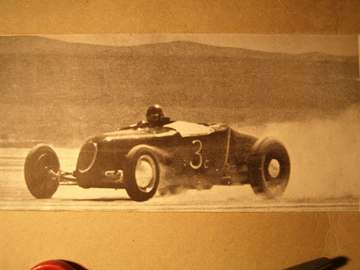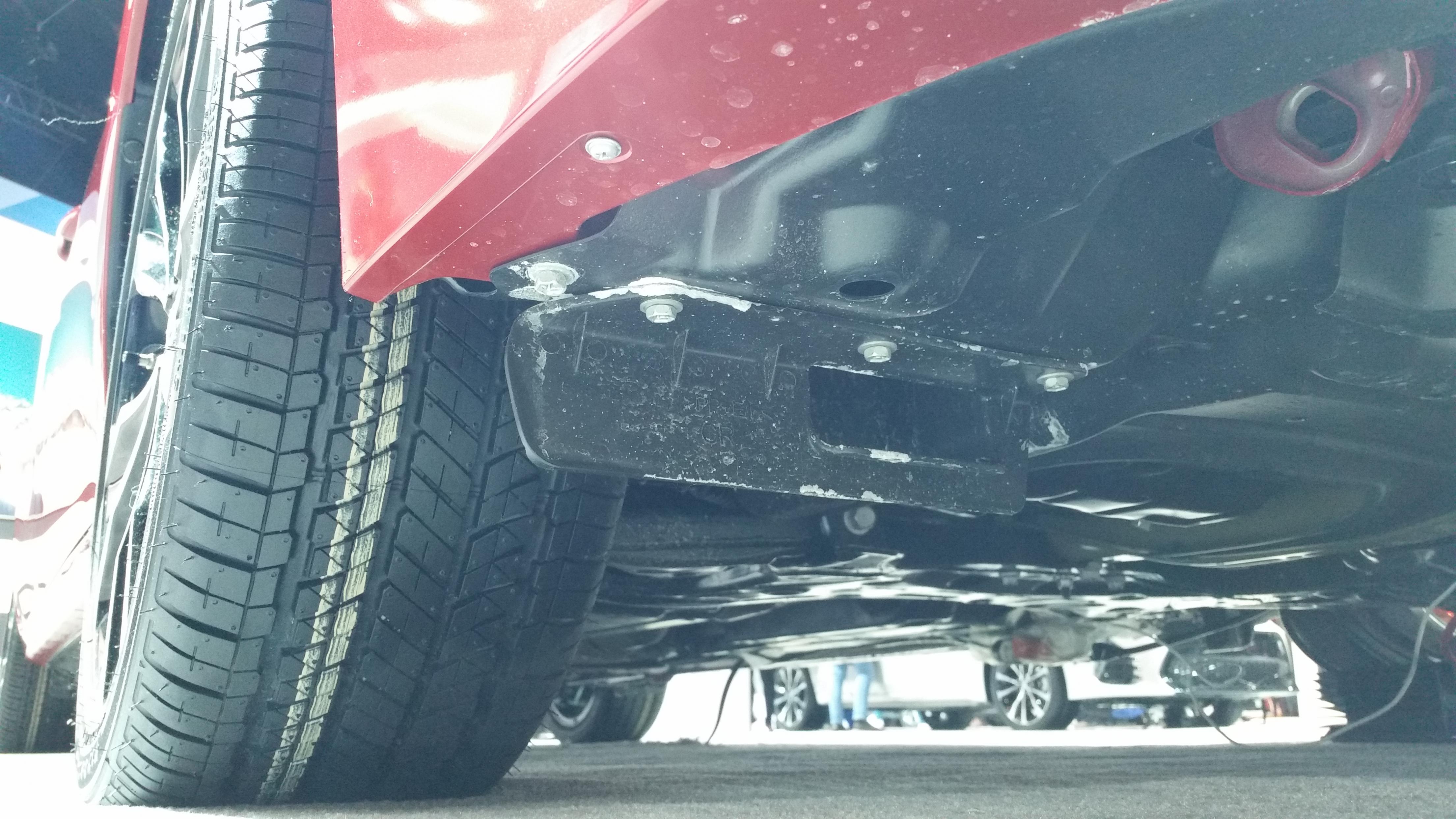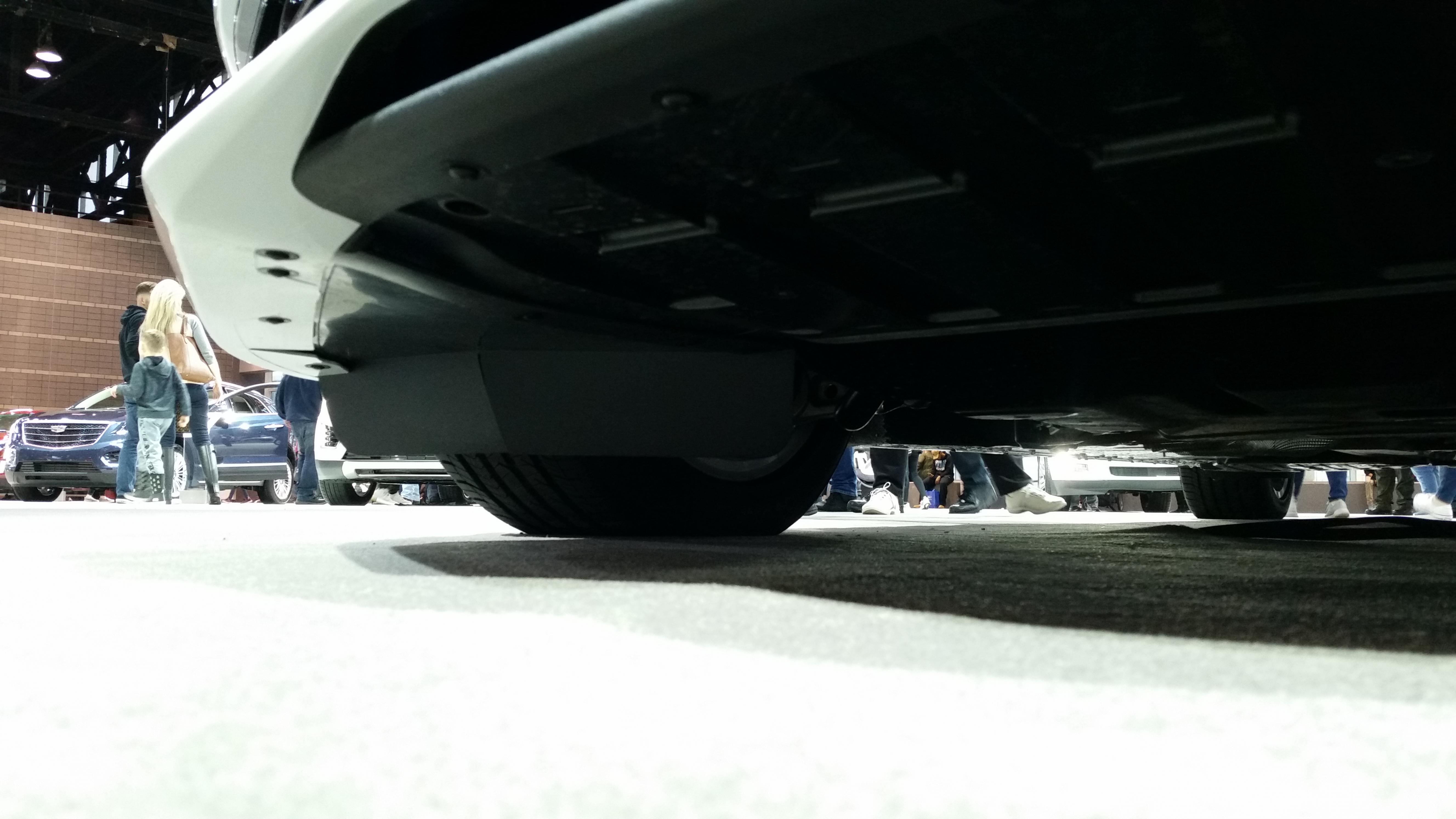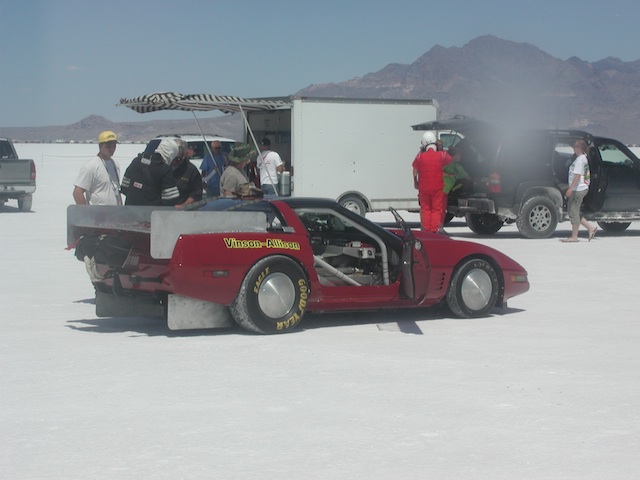 05-23-2018, 12:56 AM
05-23-2018, 12:56 AM
|
#11 (permalink)
|
|
Master EcoModder
Join Date: Aug 2012
Location: northwest of normal
Posts: 29,372
Thanks: 8,354
Thanked 9,119 Times in 7,529 Posts
|
Quote:
|
Originally Posted by mpg_numbers_guy
The rear wheel spats in the original picture look like they would increase the size of your wake by shooting air out the sides instead of directing it around.
|
Properly shaped, a spat will force air down (like a wickerbill) to channel it toward the contact patch of the tire. Keeping it out of the wheel well. The side skirt could run out front inner front to outer rear, like a semi-trailer.
There is always a jet of air that squirts out either side of the tire right at the surface, where it is wedged together. Above that everything enters the ambient flow and is swept away. (Maybe a localized pressure increase. It's all about trading pressure and velocity.)
Squirting sideways would be like trying to hold your car door open at speed.
__________________
.
.Without freedom of speech we wouldn't know who all the idiots are. -- anonymous poster
___________________
.
.tragectory: Line goes down and to the right.
|
|
|

|
 Today Today
|
|
|
|
 Other popular topics in this forum...
Other popular topics in this forum...
|
|
|
|
 05-23-2018, 09:35 AM
05-23-2018, 09:35 AM
|
#12 (permalink)
|
|
Master EcoModder
Join Date: Jul 2011
Location: Ann Arbor, Michigan
Posts: 4,211
Thanks: 141
Thanked 2,825 Times in 1,982 Posts
|
Quote:
Originally Posted by freebeard

Properly shaped, a spat will force air down (like a wickerbill) to channel it toward the contact patch of the tire. Keeping it out of the wheel well......................
|
Interesting I logged in this morning thinking that I should have mentioned wheel spats yesterday, but I would not have described their function in the terms you have.
I'm not saying you are wrong, just that I've never read this version before.
In my mind wheel spats offer no more or less surface area they are bluntly deflecting air from.
How they work is ( according to what I can recall) they reduce the area of air hitting a spinning wheel, a spinning surface causes more drag and turbulence than a stationary one.
NOTE: some articles refer to rear wheel well covers as "wheel spats". That is not what I'm talking about.
Pictures and discussion of wheel spats in this old thread:
http://ecomodder.com/forum/showthrea...s-13669-3.html


__________________
George
Architect, Artist and Designer of Objects
2012 Infiniti G37X Coupe
1977 Porsche 911s Targa
1998 Chevy S-10 Pick-Up truck
1989 Scat II HP Hovercraft
You cannot sell aerodynamics in a can............
|
|
|

|
|
The Following 2 Users Say Thank You to kach22i For This Useful Post:
|
|
 05-23-2018, 11:15 AM
05-23-2018, 11:15 AM
|
#13 (permalink)
|
|
Master EcoModder
Join Date: Aug 2012
Location: northwest of normal
Posts: 29,372
Thanks: 8,354
Thanked 9,119 Times in 7,529 Posts
|
Quote:
|
I'm not saying you are wrong, just that I've never read this version before.
|
I don't know if I'd say it the same way (wickerbill) twice. It is true about the air that's ejected between the tire and the road.
__________________
.
.Without freedom of speech we wouldn't know who all the idiots are. -- anonymous poster
___________________
.
.tragectory: Line goes down and to the right.
|
|
|

|
 05-23-2018, 12:43 PM
05-23-2018, 12:43 PM
|
#14 (permalink)
|
|
Master EcoModder
Join Date: Jul 2011
Location: Ann Arbor, Michigan
Posts: 4,211
Thanks: 141
Thanked 2,825 Times in 1,982 Posts
|
Quote:
Originally Posted by freebeard

I don't know if I'd say it the same way (wickerbill) twice. It is true about the air that's ejected between the tire and the road.
|
No, no, I see what you were saying now that I've had time to think about it.
The rotating tire pulls or draws the air in the direction of rotation.
Meaning in the front of the tire air is moving downward, and at the rear of the tire the air is moving upward.
This is how we end up with vents at the top of wheel wells on race cars to release the pressurized air in the well accumulating at the top.
I just never micro analyzed the vortex leaving the wheel spat, and would like to see a CFD illustration of that one day.
__________________
George
Architect, Artist and Designer of Objects
2012 Infiniti G37X Coupe
1977 Porsche 911s Targa
1998 Chevy S-10 Pick-Up truck
1989 Scat II HP Hovercraft
You cannot sell aerodynamics in a can............
|
|
|

|
|
The Following 2 Users Say Thank You to kach22i For This Useful Post:
|
|
 05-23-2018, 02:29 PM
05-23-2018, 02:29 PM
|
#15 (permalink)
|
|
Master EcoModder
Join Date: Aug 2012
Location: northwest of normal
Posts: 29,372
Thanks: 8,354
Thanked 9,119 Times in 7,529 Posts
|
My favorite example:

(I know it's an open wheel)
__________________
.
.Without freedom of speech we wouldn't know who all the idiots are. -- anonymous poster
___________________
.
.tragectory: Line goes down and to the right.
|
|
|

|
|
The Following User Says Thank You to freebeard For This Useful Post:
|
|
 05-23-2018, 03:53 PM
05-23-2018, 03:53 PM
|
#16 (permalink)
|
|
Master EcoModder
Join Date: Jan 2008
Location: Sanger,Texas,U.S.A.
Posts: 16,520
Thanks: 24,517
Thanked 7,436 Times in 4,817 Posts
|
spinning wheel
Without the spat,the air is attacking the forward face of the tire at road velocity,while the forward face of the tire is descending vertically downwards at the same velocity.
Evidently,the chaos created by such a situation is worth some intervention.
With CFD,or a tunnel,the automaker can 'tune' a low-cost piece of thermo-formed plastic to divert the air in such a way as to optimize the interaction for the lowest drag,short of enclosing everything,which if done,would destroy the styling.
__________________
Photobucket album: http://s1271.photobucket.com/albums/jj622/aerohead2/
|
|
|

|
 05-23-2018, 04:06 PM
05-23-2018, 04:06 PM
|
#17 (permalink)
|
|
Master EcoModder
Join Date: Jun 2016
Location: KY
Posts: 1,352
Thanks: 63
Thanked 366 Times in 269 Posts
|
So I got to work on this project some the other day, while my fenders were off... looking under the front bumper, I realized I didnít have enough area to do an air dam like I drew... so I ended up with a basic lawn edging air dam in front and I ran out of material before I could make any side skirts, but Iíll likely buy some more lawn edging for the side skirts...
__________________
My current Ecotec project...

My last Ecotec project...

|
|
|

|
 05-23-2018, 05:38 PM
05-23-2018, 05:38 PM
|
#18 (permalink)
|
|
Master EcoModder
Join Date: Aug 2012
Location: northwest of normal
Posts: 29,372
Thanks: 8,354
Thanked 9,119 Times in 7,529 Posts
|
Thanks for raising the topic.
__________________
.
.Without freedom of speech we wouldn't know who all the idiots are. -- anonymous poster
___________________
.
.tragectory: Line goes down and to the right.
|
|
|

|
 05-23-2018, 06:40 PM
05-23-2018, 06:40 PM
|
#19 (permalink)
|
|
Moderator
Join Date: Feb 2012
Location: Urbana, IL
Posts: 1,940
Thanks: 199
Thanked 1,807 Times in 943 Posts
|
Quote:
Originally Posted by kach22i

How they work is (according to what I can recall) they reduce the area of air hitting a spinning wheel, a spinning surface causes more drag and turbulence than a stationary one.
|
A few points from Aerodynamics of Road Vehicles:
-4.4.8.1: "...consequently the drag of a wheel rolling on the ground is lower than for a stationary wheel off the ground (see Section 13.42)."
-4.4.8.2: "As indicated in Fig. 4.12, the flow underneath a car spreads outward to the sides. Consequently the wheels are approached at an angle of yaw.... A yawing angle causes the drag of a wheel to increase; Fig. 4.75 gives a typical example. For a yawing angle of 15 degrees the wheel's drag coefficient is more than three times the value for zero yaw."
So, I think the function of these air dams we're seeing proliferating on cars today is not just blocking flow to the wheel face, but blocking flow in yaw to the wheel. That would explain why so many of them now curve around the inside face of the wheel, unlike just a few years ago when these dams tended to be situated slightly inboard of the wheel but with no curvature.
Old style (2018 Corolla):

New style (2018 Prius):

A more extreme example (2018 Cadillac CT6 plug-in):

Might it be possible that these dams reduce the yaw angle of the flow on the inside face of the wheel, behind the rear edge of the dam itself? That might explain the cutout on the older generation of dam designs, something only seen now on a handful of cars (the Chrysler Pacifica hybrid being the most notable).
That section on wheel flow in Hucho also has a very helpful graphic visualizing airflow around a spinning wheel. Three pairs of vortices are shed from the wheel--two from the top, two from the bottom, two from the center--all spinning inward because of the rounded shoulders, and all raising the pressure behind the wheel due to entrainment.
|
|
|

|
|
The Following User Says Thank You to Vman455 For This Useful Post:
|
|
 05-24-2018, 12:53 AM
05-24-2018, 12:53 AM
|
#20 (permalink)
|
|
Master EcoModder
Join Date: Aug 2012
Location: northwest of normal
Posts: 29,372
Thanks: 8,354
Thanked 9,119 Times in 7,529 Posts
|
Quote:
|
That section on wheel flow in Hucho also has a very helpful graphic visualizing airflow around a spinning wheel. Three pairs of vortices are shed from the wheel--two from the top, two from the bottom, two from the center--all spinning inward because of the rounded shoulders, and all raising the pressure behind the wheel due to entrainment.
|
Can you provide a quote? In the picture at Permalink #15, you can see the front wheel's bottom vortexes passing the rear tire. The dirt carried over-top in the tread is well contained. I'd wondered about those streaks coming off from mid-wheel.
Another possibility on the spat is that it is to cover the tire when it is turned. Best practice in the rear is a fence right up against the inside of the tire.

__________________
.
.Without freedom of speech we wouldn't know who all the idiots are. -- anonymous poster
___________________
.
.tragectory: Line goes down and to the right.
|
|
|

|
|